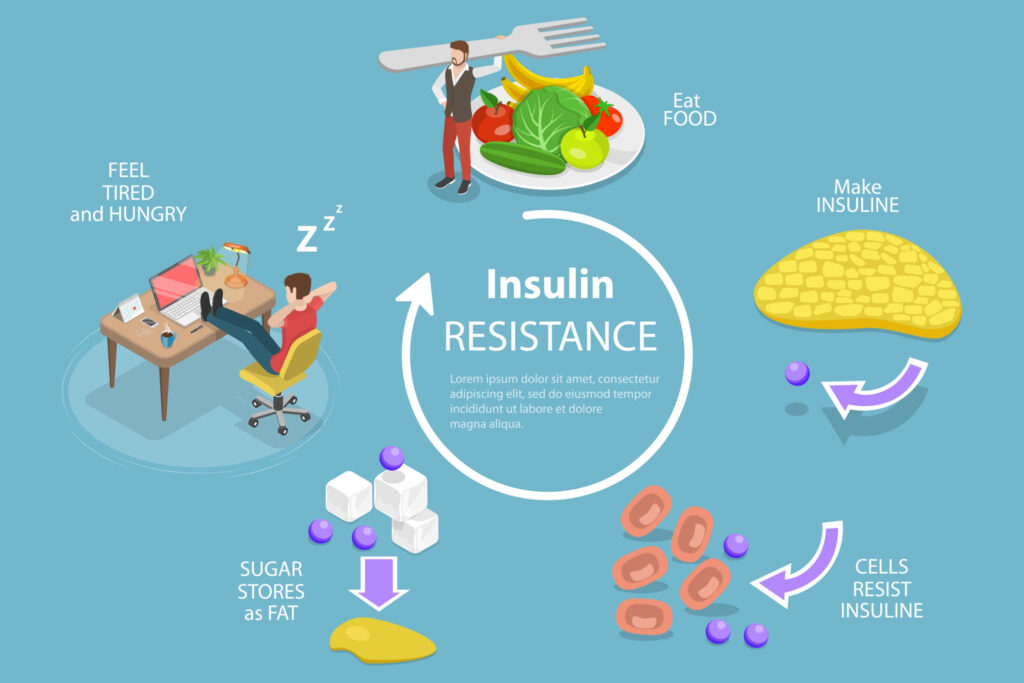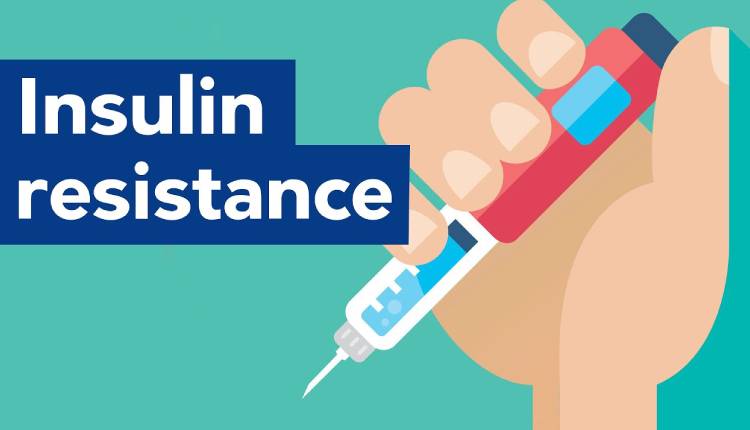The beta cells, a component of the Islets of Langerhans, located inside the pancreas, are responsible for producing the hormone insulin. Delta cells and alpha cells, which produce glucagon, are also present in these islets. Beta cells release insulin with each meal to aid the body in utilising or storing the blood glucose (blood sugar) it receives from eating.
By facilitating cellular uptake of glucose, controlling the metabolism of carbohydrates, lipids, and proteins, and encouraging cell division and growth through its mitogenic activities, insulin helps to keep blood sugar levels in a normal range.
Insulin resistance
Professor Wilhelm Falta first proposed the idea that insulin resistance might be the underlying cause of diabetes mellitus type 2 in a 1931 Vienna publication. Sir Harold Percival Himsworth of the University College Hospital Medical Centre in London later validated this idea and contributed in 1936.

When cells in your muscles, fat, and liver don’t respond well to insulin and are unable to readily absorb glucose from your blood, this condition is known as insulin resistance. As a result, your pancreas makes more insulin, which facilitates glucose entry into your cells.
As long as your pancreas can make enough insulin to compensate for your cells’ insufficient reaction to it, your blood glucose levels will stay within a healthy range.
Symptoms
Extreme thirst or hunger.
Increased or frequent urination.
Tingling in the hands or feet.
Unusually high levels of fatigue.
Frequent infections.
Insulin resistance raises the risk of
Weighing too much.
Having more than 150 mg/dL of triglycerides after fasting.
Having values of 130/80 or higher for blood pressure.
Having a serious depressive episode.
Acanthosis nigricans, or dark, velvety skin patches.
Causes
Overweight, especially abdominal fat
Inactive way of life
High-carbohydrate diet
Having diabetes in the family
Smoking
Drugs like steroids and HIV drugs
Age- it becomes more likely after 45
Issues with sleep, such as sleep apnea.
Insulin Resistance Diagnosis and Testing
Health checkup
Your weight and blood pressure will be measured.
A blood test
Test for fasting plasma glucose– After at least eight hours without eating, this test analyses your blood sugar levels. Use a Beato glucometer for taking more exact readings.
Test for oral glucose tolerance– You will first do a fasting glucose test. You will then consume a sugary fluid. A second blood test will be administered two hours later.
Test for haemoglobin A1c– Your average blood sugar level for the previous two to three months is shown by this blood test. It is used by doctors to identify diabetes or prediabetes. It helps determine whether diabetes is under control if you have it.
Is it possible to treat insulin resistance?
It’s likely that getting active will be the most successful method of combating insulin resistance. Exercise can greatly lower insulin resistance on both a long-term and short-term basis.
Introduce the everyday habit of walking. Start each day with a 30-minute stroll. If 30 minutes won’t fit in one sitting, divide it into two to break up your day.
Doing it after meals is particularly linked to bettering blood pressure, blood sugar, and weight loss.
In addition, losing weight helps reduce insulin resistance. Eat more whole grains to increase your intake of fibre, and consume foods rich in polyunsaturated, or “good,” fats.
Less potatoes and more leafy greens; concentrate on non-starchy veggies; choose healthy meals rather than processed or junk food.
No medicines have been authorised especially to treat insulin resistance. However, insulin sensitizers that are also diabetic drugs like metformin and thiazolidinediones, or TZDs, lower blood glucose levels by, at least in part, lowering insulin resistance.
